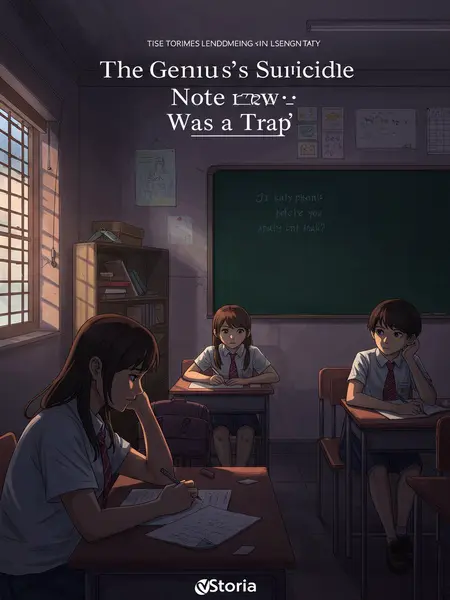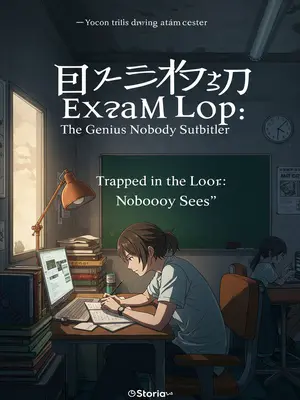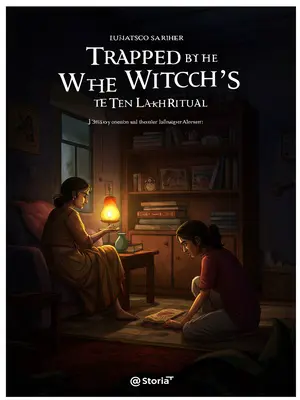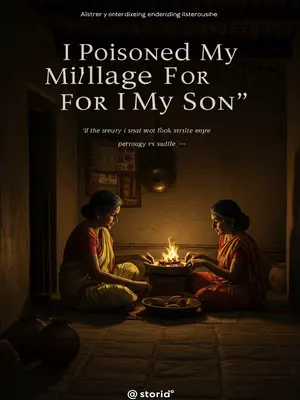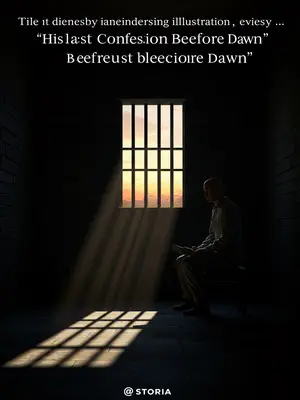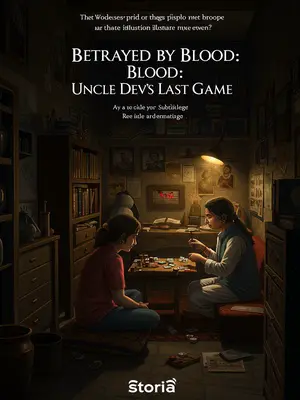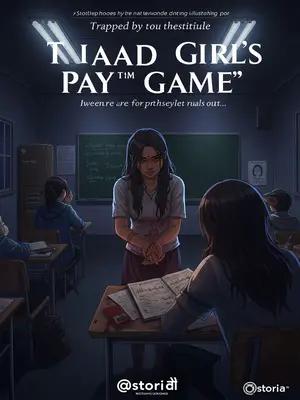Chapter 1: The Numbers That Haunt
“Don’t try to solve puzzles you don’t understand. Don’t be like Rohan.” The warning floats through Kaveripur’s tea stalls, as familiar as the smell of chai and frying pakoras. The numbers—2, 15, 40, 77, 165, __—sat on the page like a dare, but for those who knew the story, they were a wound that would never heal.
This wasn’t just a sequence fill-in-the-blank question. It was the scar that never faded, a silent echo in every corner of our town.
As I stared at those numbers, their sharpness seemed to cut deeper with every glance, like the edge of a rusted blade. For most, it was a mathematical puzzle. For some, a code. But for us—those who witnessed what happened—it was a silent scream from a boy who had run out of words.
It was also the dying message of a top student.
That much, the whole town of Kaveripur would soon come to know. We still whisper about it during chai breaks, behind closed doors, and in the lines outside the temple. People wonder if there was a hidden meaning in those digits, or if it was just a prodigy’s final goodbye.
After solving the last difficult math problem on the high school board exam, the top student wrote this sequence of numbers on his answer sheet.
The invigilators would later say he did it so calmly, as if he was merely dotting his i’s, crossing his t’s—a matter of routine, not tragedy. No drama, no tears, just the soft scratch of pen on paper.
Then, he jumped, ending his life with a final, silent full stop. The news hit us like a slap—some cried, some just stared at their hands, unable to finish their chai.
There were no farewells, no dramatic notes—just a blank space where an answer should have been. Some say it was destiny, others call it fate’s cruelty. But to me, it was the beginning of a storm we never saw coming.
The tragedy happened during the 2004 board exams.
Everyone in the district remembers that summer—how the heat pressed against your skin, how the power went off for hours, and how the roads shimmered under the sun. The whole town buzzed with exam fever. Parents performed pujas, mothers made dahi-shakkar for luck, and students clutched their pens as if they were swords.
The last subject: Mathematics.
For students, this was always the make-or-break paper. On that day, the air was thick with the scent of camphor and sweat, the tension palpable in every creaking ceiling fan and every whispered prayer outside the exam hall. Sweat beaded on brows, the ceiling fan whined, and the sharp smell of dhoop from the morning puja still lingered.
That year’s math paper was notoriously tough—even the invigilating teachers were stumped by some of the questions.
A few teachers exchanged helpless looks, their own brows furrowing as they peeked at the questions. The students’ faces mirrored each other—panic, confusion, hope. The sound of someone flipping pages, the hiss of chalk on blackboard, the occasional cough—it all seemed louder that day.
In the entire exam hall, only Rohan, who always topped his grade, looked calm and unruffled.
He sat straight, as if the chaos around him was just background noise. His uniform was neatly pressed, his shoes polished, his hair parted to the side, the way his father liked. Rohan’s eyes were focused, his hand steady. Other students stole glances at him, hoping for some secret sign of struggle. But he was serene—almost otherworldly.
He filled out the entire answer sheet, even completing the last part of the final question.
Invigilators watched him, murmuring that perhaps Rohan would be the only one to get a perfect score. Some even said he’d make it to IIT one day, or maybe become the next Ramanujan. Even then, nobody guessed what he was about to do.
Half an hour before the exam ended, Rohan suddenly put down his pen, climbed out of the classroom window, vaulted over the railing, and dived down in a posture like a leaping fish.
For a moment, time seemed to slow. The rickety fan spun overhead, pages fluttered on desks, and for a second, everything was normal. Then, in a flash, Rohan was gone—his white shirt a blur against the blue sky, arms curved protectively around himself as he leapt. Someone shouted his name, but it was too late.
The students who witnessed it screamed in shock.
A girl fainted on the spot; another boy ran to the window and vomited. Desks scraped, chairs clattered, and a rising wail filled the hall. A teacher dashed to the corridor, slippers slapping against the floor, calling for help.
Chaos erupted.
The peon dropped his bundle of exam papers, scattering them across the marble floor. Two teachers tried to keep the other students away from the window, while the principal arrived, face ashen, clutching his chest in disbelief. Someone called the police, someone called Rohan’s father, but everyone’s voice was drowned out by panic.
The commotion grew louder and more frantic.
Soon the whole school was buzzing—students from other classes rushed to see what happened, their faces white with fear. Mothers, waiting outside the gate, clustered in anxious groups, one fainting as the news spread, others muttering prayers or frantically calling relatives on their mobiles.
The top student, Rohan, had jumped from the building.
His name echoed down the stairwell, repeated in hushed tones and gasps. Rohan—always the pride of the school, now the reason for its greatest tragedy.
His skull was shattered; he died instantly.
The medical team came running, white coats flapping, but there was nothing they could do. The ground where he landed was stained a deep, dark red. Teachers covered his body with a sheet, and someone started reciting a prayer for the dead. People from the neighbourhood gathered, whispering, “Oh, Ram! What has happened?”
To make sure of his death, Rohan shielded his chest with both arms midair, letting his head hit the ground first.
It was the sort of cold calculation you’d expect from a mathematician, but not from a fifteen-year-old boy. The details haunted everyone—how deliberate, how final. Some say he wanted to leave no chance of survival, no way back.
The CCTV cameras caught everything.
The footage would be played and replayed in the staff room, the principal’s office, and the police station. The sound of the impact would echo in people’s nightmares for months. Even the technician who reviewed the tape sat in silence afterward, muttering a prayer under his breath.
As a police officer, I’ve seen countless crime scenes and surveillance footage, but watching Rohan’s jump still gives me chills.
I have seen bodies after riots, after accidents on the highway, after jealous husbands and angry neighbours have done their worst. But this—this was something else. A child, choosing to end his story, so quietly, so decisively.
How could a ninth grader have such unshakable resolve to die?
We ask ourselves this question at every funeral, but here it was sharper—how did a boy with the world at his feet, with every blessing, find himself so alone at the edge of that window?
How could he remain so composed at the very end?
In the footage, Rohan’s face was calm, almost at peace. He looked out into the distance, as if searching for something only he could see. The teachers standing behind him didn’t sense a thing—until he was gone.
But after I learned more about Rohan, I realised at once that this case was different.
You see, not every death is a suicide. Sometimes it’s a message, a protest, a riddle left behind for the living to solve. That’s what I began to understand as the details unfolded.
It was far more complicated than I had imagined.
My experience as a police officer had taught me to look beneath the surface, to trust my gut. And my gut told me there was more to Rohan’s death than anyone wanted to believe.
